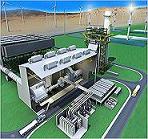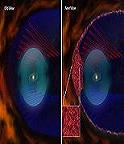- GD&T
GENERAL DIMENSIONING- International Paper Size Standards
- Technical Drawing Styles
- ISO And ANSI Projections
- ANSI Technical Drawing Views
- Technical Drawing Dimesioning Types
- ANSI and ISO Geometric Tolerancing Symbols
- Geometric Tolerancing Reading
- Taylor Principle Rule#1
- Form Tolerances
- Profile Tolerances
- Orientation Tolerances
- Location Tolerances
- Runout Tolerances
- TOLERANCES
ANSI AND ISO- Tolerancing and Engineering Standards
- Hole and Shaft Basis Limits And Fits
- ISO International System For Limits And Fits
- International Tolerance Grade (IT)
- Fundamental Deviations For Hole and Shaft Basis
- ISO Tolerance Band IT01-IT16
- Calculation Of International Tolerance
- Calculation of Upper and Lower Deviation For Shaft
- Calculation of Upper and Lower Deviation For Holes
- ISO Shaft Tolerances (3mm-400mm)
- ISO Shaft Tolerances (400mm-3150mm)
- ISO Hole Tolerances (3mm-400mm)
- ISO Hole Tolerances (400mm-3150mm)
- ANSI Standard Limits and Fits
- METAL CUTTING TECHNOLOGIES
- Terms and Definitions of the Cutting Tools
- Cutting Tool Materials
- Selection of Carbide to machine the work-part
- Identification System For Indexable Inserts
- Work-Part Materials
- Machinability and the specific cutting force
- Machinability of the Certain Material Evaluations
- Cutting Forces and Chip Formations
WORK-PIECE MATERIAL CONDITIONS-Continue
Chemical Composition: Chemical composition of a metal is a major factor in determining its machinability. The effects of composition though, are not always clear, because the elements that make up an alloy metal, work both singly and collectively. Certain generalizations about chemical composition of steels in relation to machinability can be made, but nonferrous alloys are too numerous and varied to permit such generalizations.
Fabrication: Whether a metal has been hot rolled, cold rolled, cold drawn cast, or forged will affect
its grain size, ductility, strength, hardness, structure-and therefore-its machinability. The term "wrought"
refers to the hammering or forming of materials into pre-manufactured shapes which are readily altered into
components or products using traditional manufacturing techniques. Wrought metals are defined as that group
of materials, which are mechanically shaped into, bars, billets, rolls, sheets, plates or tubing.
Casting involves pouring molten metal into a mold to arrive at a near component shape that requires minimal,
or in some cases no machining. Molds for these operations are made from sand, plaster, metals and a variety of other materials.
Hardness: The textbook definition of hardness is the tendency for a material to resist deformation.
Hardness is often measured using either the Brinell or Rockwell scale. The method used to measure hardness
involves embedding a specific size and shaped indenter into the surface of the test material, using
a predetermined load or weight. The distance the indenter penetrates the material surface will correspond to
a specific Brinell or Rockwell hardness reading. The greater the indenter surface penetration,
the lower the ultimate Brinell or Rockwell number, and thus the lower the corresponding hardness level.
Therefore, high Brinell or Rockwell numbers or readings represent a minimal amount of indenter penetration
into the workpiece and thus, by definition, are an indication of an extremely hard part.
Figure 3.1 shows how hardness is measured. 600
The Brinell hardness test involves embedding a steel ball of a specific diameter, using a kilogram load,
in the surface of a test piece. The Brinell Hardness Number (BHN) is determined by dividing
the kilogram load by the area (in square millimeters) of the circle created at the rim of the dimple or
impression left in the workpiece surface. This standardized approach provides a consistent method
to make comparative tests between a variety of workpiece materials or a single material that
has undergone various hardening processes. In terms of machining practices and considerations,
low material hardness enhances productivity. Material cutting speed is often selected based
on material hardness, and tool life adversely affected by work-piece hardness. Cutting loads
and temperature rise for a specific cutting speed with work-piece hardness, thereby reducing tool life.
The Rockwell test can be performed with various indenter sizes and loads.
Several different scales exist for the Rockwell method or hardness testing.
The three most popular are outlined below in terms of the actual application
the test is designed to address:
| Rockwell Scale | Testing Application | ||||
| A | For Tungsten and other extremely hard materials , and thin, hard steel | ||||
| B | For low and medium carbon steel in the annealed conditions | ||||
| C | For material less hard than Rc B 100 |
Yield Strength: Tensile test work is used as a means of comparison of metal material conditions.
These tests can establish the yield strength, tensile strength and many other conditions of a material
based on its heat treatment. In addition, these tests are used to compare different work-piece materials.
The tensile test involves taking a cylindrical rod or shaft and pulling it from opposite ends with
a progressively larger force in a hydraulic machine. Prior to the start of the test, two marks either
two or eight inches apart are made on the rod or shaft. As the rod is systematically subjected
to increased loads, the marks begin to move farther apart. A material is in the so-called elastic
zone when the load can be removed from the rod and the marks return to their initial distance apart
of either two or eight inches. If the test is allowed to progress, a point is reached where,
when the load is removed, the marks will not return to their initial distance apart. At this point,
permanent set or deformation of the test specimen has taken place.
Yield strength is measured just prior to the point before permanent deformation takes place.
Yield strength is stated in PSI (pounds per square inch) and is determined by dividing
the load just prior to permanent deformation by the cross sectional area of the test specimen.
This material property has been referred to as a condition, since it can be altered during heat treatment.
Increased part hardness produces an increase in yield strength and therefore, as a part becomes harder,
it takes a larger force to produce permanent deformation of the part. Yield strength should not be
confused with fracture strength, cracking or the actual breaking of the material into pieces,
since these properties are quite different and unrelated to the current subject. By getting understand
of the machining consideration based on yield strength, a work-piece with high yield strength
requires a high level of force to initiate chip information in a machining operation.
Required force needed per unit of the area to create permanent deformation on the work-piece surface.
Material hardness and yield strength increase simultaneously during the heat treatment.
Therefore, material relatively with high yield strengths will be more difficult to machine
and it will reduce tool life.
Tensile Strength: The tensile strength of a material increases along with yield strength as it is heat treated to greater hardness levels. This material condition is also established using a tensile test. Tensile strength (or ultimate strength) is defined as the maximum load that results during the tensile test, divided by the cross-sectional area of the test specimen. Therefore, tensile strength, like yield strength, is expressed in PSI. This value is referred to as a material condition rather than a property, since its level just like yield strength and hardness, can be altered by heat treatment. Therefore, based on the material selected, distinct tensile and yield strength levels exist for each hardness reading. The machinability, the higher tensile strength will be required higher cutting forces just as increased yield strength. The stronger cutting edge geometries are required for productive machining and acceptable tool life.
WORK-PECE MATERIALS' PHISICAL PROPERTIES
Physical properties will include those characteristics included in the individual material groups, such as the modulus of elasticity, thermal conductivity, thermal expansion and work hardening.
Modulus of Elasticity of Work-piece Material: The modulus of elasticity can be determined during a tensile test in the same manner as the previously mentioned conditions. However, unlike hardness, yield or tensile strength, the modulus of elasticity is a fixed material property and, therefore, is unaffected by heat treatment. This particular property is an indicator of the rate at which a material will deflect when subjected to an external force. This property is stated in PSI and typical values are several million PSI for metals. Hardness is measured by depth of indentations made. Work-piece materials with a high thermal conductivity have a better machinability. The higher the modulus elasticity requires positive or highly positive raked cutting geometries. Positive cutting geometries produce lower cutting forces, so chip formation is enhanced on elastic material using these types of tools. Sharp positive cutting edges tend to bite and promote shearing of the work-piece material, whereas blunt negative geometries have a tendency to create large cutting forces.
Thermal Conductivity of Work-piece Material: Materials are frequently labeled as being either heat conductors or insulators. Conductors tend to transfer heat from a hot or cold object at a high rate, while insulators impede the flow of heat. Thermal conductivity is a measure of how efficiently a material transfers heat. Therefore, a material that has a relatively high thermal conductivity would be considered a conductor, while one with a relatively low level would be regarded as an insulator. Work-piece materials that exhibit low thermal conductivities will not dissipate heat freely. Therefore during the machining of the work-piece materials, the cutting tool work-piece become extremely hot. The created heat accelerates wear at the cutting edge and reduces the tooling life. The proper application of sufficient amounts of coolant directly on to the cutting zone will essential improve tooling life in on metals with low created heat/ thermal conductivity.
Thermal Expansion of Work-piece Material: Many materials, especially metals, tend to increase in dimensional size as their temperature rises. This physical property is referred to as thermal expansion. The rate at which metals expand varies, depending on the type or alloy of material under consideration. The rate at which metal expands can be determined using the material's expansion coefficient. The greater the value of this coefficient, the more a material will expand when subjected to a temperature rise or contract when subjected to a temperature reduction. For example, a 100- bar of steel which encounters a 100 F rise in temperature would measure 100.065-. In general machining large thermal expansion coefficient on work-piece materials will make holding close finish tolerances extremely difficult. Because A small thermal expansion rising on the work-piece material will result on dimensional changes. The machining on these types of work-piece material will require proper coolant supplies for thermal and dimensional stabilities. The use of positive cutting geometries on these types of work-piece materials will also reduce machining temperatures
Hardening of Work-piece Material: Many metals exhibit a physical characteristic that produces dramatic increases in hardness due to cold work. Cold work involves changing the shape of a metal object by bending, shaping, rolling or forming. As the metal is shaped, internal stresses develop which act to harden the part. The rate and magnitude of this internal hardening varies widely from one material to another. Heat also plays an important role in the work hardening of a material. When materials that exhibit work hardening tendencies are subjected to increased temperature, it acts like a catalyst to produce higher hardness levels in the work-piece. Positive low force cutting geometries at moderate speed and feed are normally effective on this type of material
Copyright ©2010-2023 Coban Engineering.All Rights Reserved.








